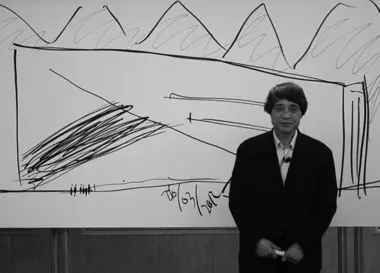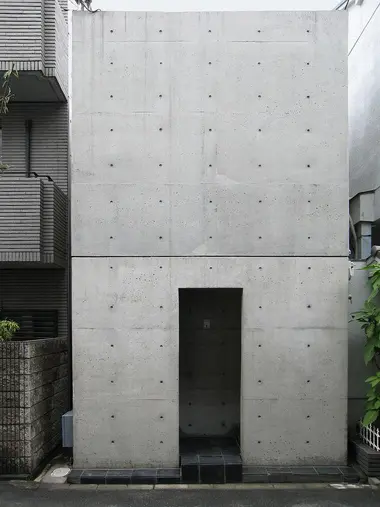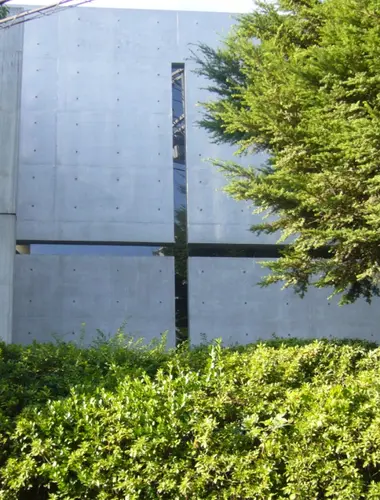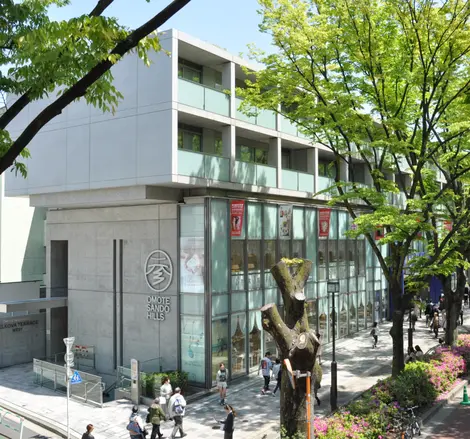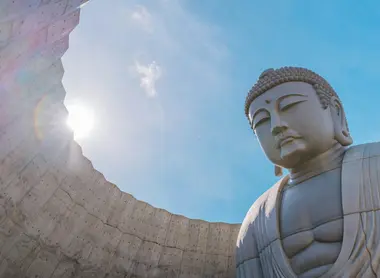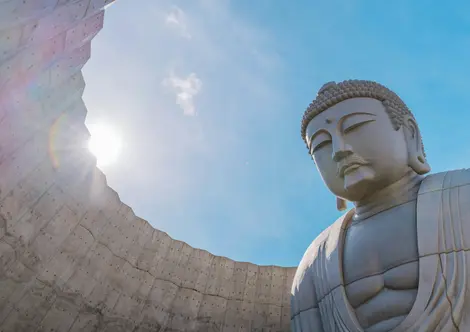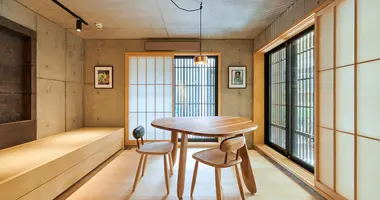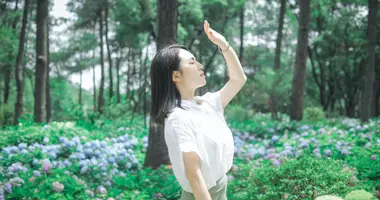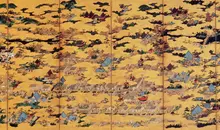La stella dell'architettura Tadao Ando
- Pubblicato il : 13/09/2023
- Per : S.V.
- Youtube
Tadao Ando, il viaggio di un architetto autodidatta
Dal ring di pugilato al più prestigioso premio internazionale di architettura: ecco la straordinaria carriera dell'architetto giapponese Tadao Ando.
Una carriera atipica
Come ama dire, Tadao Ando è un autodidatta. Ex pugile professionista non laureato in architettura, appartiene oggi alla selezionatissima casta degli "starchitetti". Da quando ha iniziato a Osaka nel 1969, ha realizzato più di 300 progetti architettonici in tutto il mondo.
Nato a Osaka nel 1941, Ando è stato allevato dalla nonna. Da adolescente trascorre le sue giornate nelle botteghe artigiane (falegnami, carpentieri, ferraioli e vetrai), dove sviluppa il gusto per l'architettura e il design. Gli piaceva anche vagare per le strade di Osaka alla ricerca di vecchi edifici da studiare. Inizia così il suo apprendistato informale in architettura.
Una volta appesi i guantoni da boxe al chiodo, intorno ai 24 anni, si occupa di design di mobili, architettura d'interni e ristrutturazione di case. Acquista libri di architettura di seconda mano e scopre le opere di Le Corbusier. Particolarmente colpito dall'opera dell'architetto francese, intraprende un lungo viaggio artistico e formativo per, come dice lui stesso: "visitare gli edifici che mi ispirano, vivere i loro spazi e ricordarli con il mio corpo". Tra il 1962 e il 1969 ha girato il mondo per vedere i grandi capolavori dell'architettura e perfezionare la sua autoformazione. Fu anche l'occasione per apprezzare gli edifici di Le Corbusier a Parigi e Marsiglia e le abbazie cistercensi nel sud della Francia.
Riconoscimento internazionale
Tornato a Osaka nel 1969, ha aperto un proprio studio e ha iniziato a costruire piccole case unifamiliari all'inizio degli anni Settanta.
Uno dei suoi primi progetti, la casa Azuma nel quartiere di Sumiyoshi, lo renderà l'architetto da tenere d'occhio. Realizzata interamente in cemento, occupa un piccolo spazio tra le case in stile tradizionale. Ando sfruttò la ristrettezza del sito per progettare una casa con una facciata cieca e un cortile interno che permetteva ai suoi occupanti di sfuggire alla follia urbana. Completata nel 1976, l'opera è stata premiata con il Japanese Architecture Institute Prize nel 1979. Nel 1982, Tadao Ando acquistò la casa che gli aveva dato tanto successo. Da allora è la sede del suo studio di architettura.
Gli anni '90 sono sinonimo di consacrazione. Progetta il padiglione giapponese all'Esposizione Universale di Siviglia del 1992, il padiglione più discusso e visitato. I più grandi musei del mondo gli dedicano già grandi retrospettive: il MOMA di New York nel 1991 e il Centra Georges Pompidou nel 1993. Dopo aver vinto il prestigioso Premio Pritzker nel 1995, è stato nominato professore ordinario all'Università di Tokyo - l'architetto autodidatta!
Qual è lo stile di Tadao Ando?
- Forme geometriche semplici
Utilizzando un vocabolario minimo di forme (cerchio, quadrato, rettangolo, ecc.) e una tavolozza ridotta di materiali, il suo stile è immediatamente riconoscibile. Con la sua economia di mezzi e la sua semplicità, Ando si inserisce in una certa tradizione giapponese, pur ispirandosi agli stili occidentali di Le Corbusier, del Bauhaus e dell'architetto americano Louis Kahn.
- Calcestruzzo liscio
Ando ha una predilezione per il calcestruzzo, il cui aspetto cambia nel tempo e cattura la luce. Prestando particolare attenzione ai dettagli, ha portato la sua ricerca di raffinatezza all'estremo, sviluppando una propria formula di calcestruzzo. Anche se lasciato grezzo, il suo cemento è liscio e delicato, simile al cemento spazzolato o verniciato.
- L'architettura come luogo di rifugio
Gli edifici di Tadao Ando sono concepiti come paradisi di pace, rifugi contro il caos urbano. Lo spazio costruito è un rifugio architettonico dallo spazio pubblico urbano. Per questo molte delle sue case sono organizzate attorno a un cortile interno che lascia entrare la luce e crea un bozzolo protettivo.
- Integrazione di elementi naturali (acqua, luce)
Ando utilizza gli elementi naturali come elementi architettonici a sé stanti. Nella sua Chiesa della Luce, costruita nel 1989 a Ibaraki, dove il sole entra nell'edificio attraverso un'apertura a forma di croce, è proprio la luce a materializzare la qualità sacra del luogo. Un notevole esempio di armonia tra un elemento naturale e l'architettura concreta.
L'isola di Naoshima segnata da Ando
Nell'impressionante carriera dell'architetto, l'isola di Naoshima l'isola dedicata all'arte contemporanea, è il suo progetto di punta. Naoshima era originariamente una delle isole industriali nel mare interno di Seto. A causa della deindustrializzazione, la futura isola d'arte è stata abbandonata prima di diventare il successo turistico che ha oggi.
Nel 1989, Sôichirô Fukutake, presidente della società Benesse e iniziatore del museo dell'isola, chiese ad Ando di costruire la Benesse House. Questo hotel-museo è un luogo unico che offre una vista spettacolare sul mare e sulle isole vulcaniche circostanti.
Negli anni 2000 ha progettato altri due musei sull'isola: il Chichu Art Museum e il Lee U-fan Museum. La creazione del suo museo a Naoshima, l'Ando Museum, è un ulteriore segno del suo rapporto intimo con il luogo: è l'architetto di Naoshima. Nel 2025 ha creato il Nuovo Museo d'Arte di Naoshima, che questa volta presenta artisti asiatici contemporanei.
Scoprite il nostro tour d'arte e architettura nel Mare Interno!
Altre opere chiave di Tadao Ando in Giappone
Con 300 opere architettoniche in una cinquantina di Paesi, è difficile sceglierne solo alcune. Tuttavia, Japan Experience vi propone una piccola selezione delle opere del maestro nell'arcipelago. La nostra scelta è guidata da un criterio essenziale: l'accessibilità al pubblico, in modo che possiate scoprire questi luoghi da ogni angolazione!
- A Tokyo
Omotesando Hills, Shibuya - Stazione di Omotesando
21-21 Design sight, Minato - Stazione di Roppongi
Tokyo Sky Tree - Sumida - Stazione di Oshiage (è il supervisore del progetto)
Museo d'arte di Tokyo (TAM), Sengawa - Stazione di Sengawa
chiesa del 21° secolo di Cristo a Hiroo, Shibuya - Stazione di Hiroo
- Nel Kansai
Yumebutai, isola di Awaji - Stazione Kokudo Yumebutai mae
Tempio dell'acqua di Honpukuji, isola di Awaji - stazione di Kokudo Yumebutai mae
Chiesa della Luce di Ibaraki, Osaka - Stazione Handaibyoin
Casa Azuma, Osaka - Stazione Sumiyoshi
Foresta di libri per bambini di Nakanoshima, Osaka - Stazione Yodoyabashi
Case popolari di Rokko, Kobe - Stazione di Rokko
Museo d'arte della Prefettura di Hyogo, Kobe - Stazione Iwaya
- In Hokkaido
Chiesa sull'acqua - Nakatomamu, Hokkaido - Stazione di Tomamu
Collina del Buddha e cimitero Makomanai Takino, Sapporo, Hokkaido - Fermata 滝野峠 Takino Toge (Passo di Takino)
Kitakaro Sapporo Honkan Cafe, Sapporo - Stazione di Sapporo

